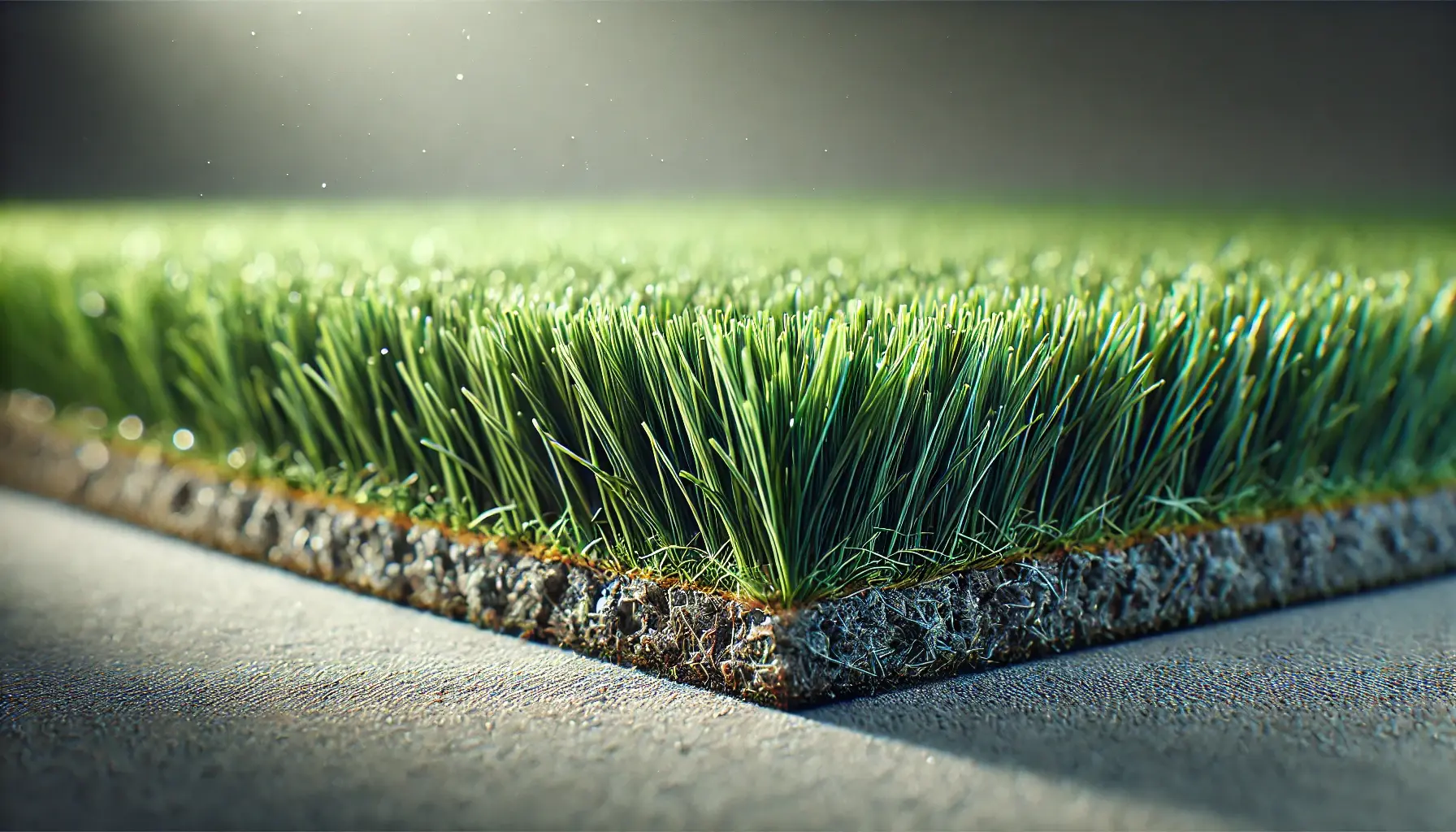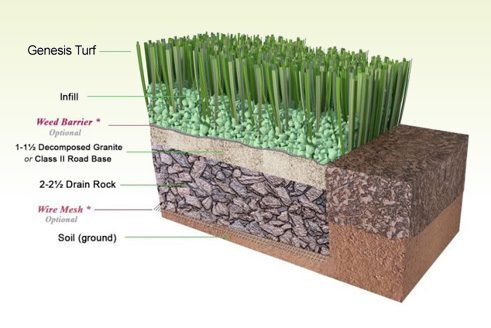Look Into the Environmental Advantages of Opting for Synthetic Grass Solutions
The fostering of synthetic grass solutions provides a compelling chance to address pressing ecological obstacles. By significantly minimizing water use and decreasing the application of dangerous chemicals, these choices not just advertise sustainable landscaping yet likewise safeguard local ecological communities. The lower carbon footprint connected with lowered maintenance activities contributes to an extra lasting strategy to land monitoring. However, the ramifications of these benefits prolong beyond mere preservation efforts, questioning concerning their lasting effect on environment conservation and total environmental equilibrium. Exploring these measurements discloses a complex interaction worth considering.
Water Conservation Conveniences
Among one of the most considerable advantages of synthetic grass is its capability to preserve water. Conventional lawn lawns call for considerable watering, specifically in locations susceptible to drought or water limitations. On the other hand, synthetic grass does not require watering, dramatically reducing the overall demand for water resources. This attribute is specifically beneficial in dry regions where water shortage is a pressing problem.
By getting rid of the requirement for routine watering, artificial lawn adds to sustainable landscape methods and assists reduce the environmental effect of too much water consumption. The preservation of water prolongs to the reduction of overflow, which can lead to soil disintegration and waterway contamination.
In addition, the setup of synthetic grass enables home owners and municipalities to designate water sources more efficiently, concentrating on essential uses such as drinking water and agriculture. The shift towards synthetic grass not only advertises liable water use yet additionally straightens with wider ecological goals targeted at maintaining natural resources.
As areas significantly prioritize sustainability, the water conservation benefits of man-made grass provide an engaging situation for its adoption in property and industrial landscape design projects.
Reduced Chemical Use
The change to fabricated turf considerably lowers the dependence on chemical treatments typically utilized in natural grass upkeep. Conventional lawn administration normally includes the application of plant foods, pesticides, and herbicides to advertise development and control bugs. These chemicals can present risks to human health and wellness, neighborhood wild animals, and the setting, adding to dirt and water contamination.
In comparison, man-made grass gets rid of the need for these hazardous materials. By lessening the launch of artificial substances into the ecosystem, man-made turf promotes healthier soil and water systems.
In addition, the lack of chemical runoff related to synthetic grass setups helps shield regional rivers from pollution, supporting marine life and keeping biodiversity. Arizona turf. As communities increasingly prioritize lasting practices, deciding for synthetic grass provides a sensible remedy that aligns with environmental conservation goals. With this change, homeowner can appreciate lush environment-friendly rooms without jeopardizing environmental health, paving the way for a more sustainable future
Reduced Carbon Impact

Furthermore, the installation of synthetic grass can cause considerable water conservation. Natural grass call for significant amounts of water for watering, which not just contributes to the carbon impact related to water extraction and treatment yet additionally see page stress regional water sources. On the other hand, synthetic grass needs minimal upkeep, requiring no watering, therefore significantly minimizing water use and its associated energy costs.
In addition, the long life of synthetic grass adds to its reduced carbon influence. With a life expectancy of approximately 15 years or more, the demand for frequent replacements is diminished, leading to much less waste and lower energy usage in manufacturing and disposing of traditional grass choices. On the whole, fabricated lawn presents a sustainable choice for environmentally conscious landscape design.
Habitat Conservation
Environment preservation is an essential factor to consider in the argument over landscaping choices, especially when comparing synthetic grass to natural grass. Natural turf yards usually need substantial maintenance, consisting of making use of herbicides, fertilizers, and pesticides, which can detrimentally impact regional communities. These chemicals can leach into the soil and waterways, damaging indigenous plants and fauna and interrupting regional habitats.
In contrast, synthetic grass provides a chance to decrease the eco-friendly impact of landscaping. By going with artificial grass, homeowners can reduce the disturbance of natural environments connected with conventional grass care methods. Man-made lawn eliminates the requirement for dangerous chemicals, therefore securing close-by wildlife and maintaining the integrity of surrounding communities. The installment of man-made turf can lead to the conversion of previous directory grass locations into more biodiverse landscapes, such as pollinator yards or indigenous plant areas, which can sustain neighborhood wildlife.
Ultimately, the transition to synthetic grass not only preserves water and minimizes maintenance initiatives but also cultivates a much more harmonious partnership between human activities and the native environment, advertising environment preservation while doing so.
Long-Term Sustainability
Lasting sustainability is a vital consider assessing the advantages of synthetic grass over standard grass lawns. One of the most significant advantages of synthetic turf is its toughness; it can last up to 15-20 years with very little maintenance, whereas natural yard needs regular reseeding and replacement. This longevity lowers the demand for consistent resources, such as water, fertilizers, and pesticides, which are necessary for preserving a healthy yard lawn.
Furthermore, artificial lawn contributes to a reduction in carbon emissions related to yard care devices. Standard lawns usually need gas-powered mowers, trimmers, and blowers, every one of which add to air pollution. Artificial turf companies phoenix. On the other hand, synthetic grass gets rid of the demand for such tools, promoting a cleaner environment
Furthermore, the manufacturing of synthetic grass progressively uses recycled products, improving its sustainability account. As manufacturers take on eco-friendly practices, the environmental impact of fabricated turf continues to decrease.

Final Thought
The adoption of synthetic grass services offers considerable useful content ecological benefits, including substantial water preservation, decreased reliance on damaging chemicals, and a lower carbon impact. Additionally, synthetic grass help in maintaining natural environments by lessening land disturbance and advertising long-lasting sustainability with using durable materials. Collectively, these aspects underscore the potential of synthetic grass to add favorably to ecological wellness and provide a feasible alternative to typical landscape design methods in a significantly resource-conscious world.
In comparison, fabricated turf does not require watering, considerably minimizing the overall demand for water resources. By lessening the release of artificial substances right into the ecological community, synthetic lawn advertises healthier soil and water systems.
Additionally, the installment of artificial lawn can result in substantial water preservation. In contrast, fabricated turf needs very little maintenance, calling for no watering, thus significantly minimizing water use and its connected power costs.
